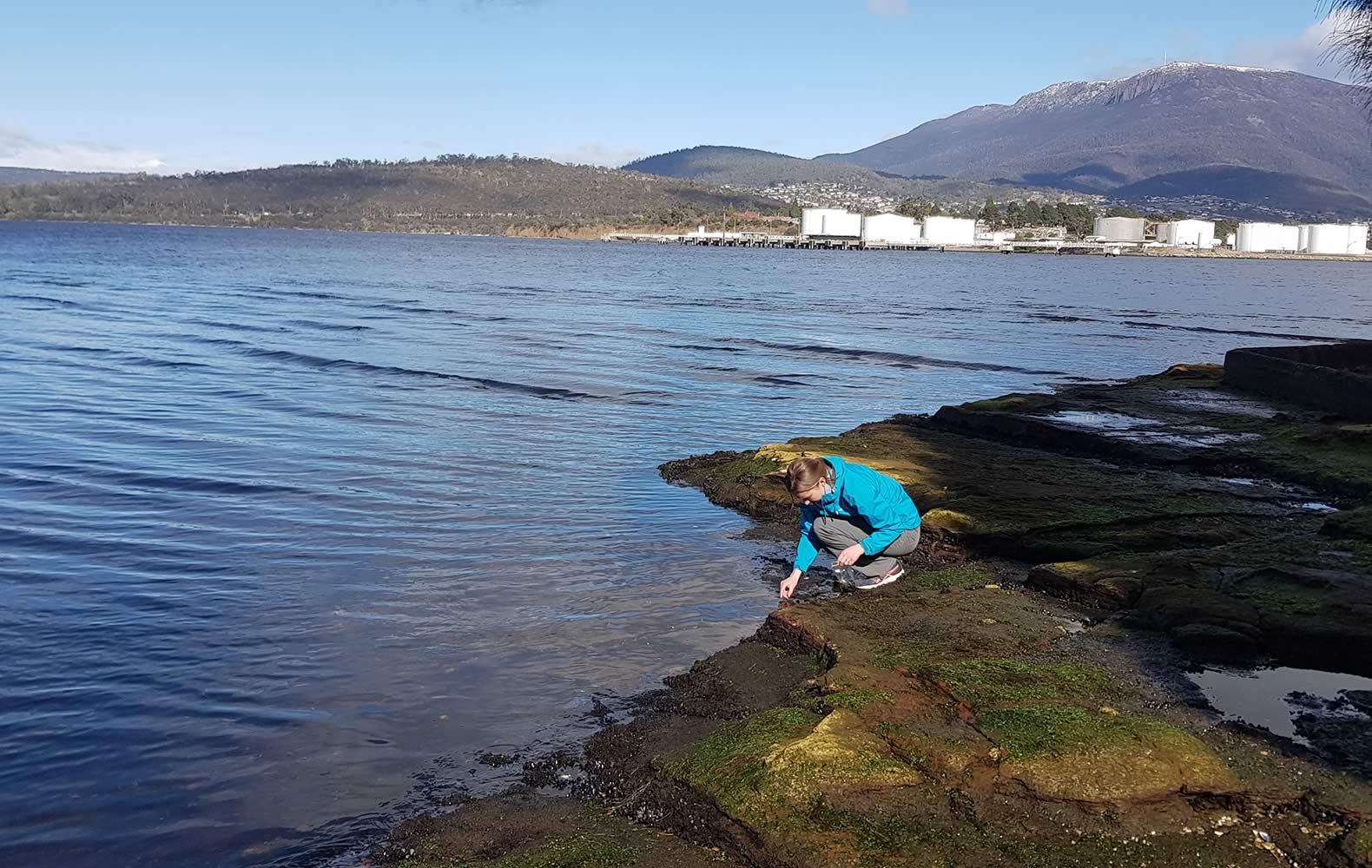Tracing nitrogen sources in the estuary

Scientist collecting seaweed.
Image: Derwent Estuary Program
The DEP conducted a pilot study using isotopic fingerprinting techniques in macroalgae (seaweed) as an indicator for nitrogen sources in the estuary. Common ulvoids (e.g. Ulva australis also known as sea lettuce) along eleven rocky reefs of the estuary foreshore were sampled and analysed for their nitrogen content and isotopic composition.
Results show that the sampled ulvoids in the lower and middle estuary predominantly use a mixture of two nitrogen sources, marine nitrogen and sewage nitrogen from wastewater treatment plants. Contributions of sewage nitrogen to nitrogen used by the macroalgae in the mid estuary ranged from 9% at Cassidy Bay to 100% at Cameron Bay. In comparison, sites in the lower estuary showed that ulvoids predominantly use marine nitrogen.
This study provides a snapshot of nitrogen utilisation by macroalgae and indicated that sewage is the primary source of anthropogenic nitrogen in the estuary. To refine the methods of this study it will be repeated next summer.
Friday 20 September 2019
